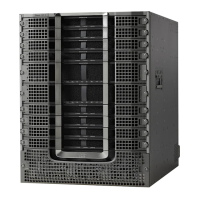Table 1: Hardware Compatibility Matrix for the Cisco cBR Series Routers
Interface CardsProcessor EngineCisco CMTS Platform
Cisco IOS-XE Release 16.5.1 and
Later Releases
Cisco cBR-8 CCAP Line Cards:
• PID—CBR-LC-8D30-16U30
• PID—CBR-LC-8D31-16U30
• PID—CBR-RF-PIC
• PID—CBR-RF-PROT-PIC
• PID—CBR-CCAP-LC-40G-R
Cisco cBR-8 Downstream PHY
Modules:
• PID—CBR-D30-DS-MOD
• PID—CBR-D31-DS-MOD
Cisco cBR-8 Upstream PHY
Modules:
• PID—CBR-D30-US-MOD
• PID—CBR-D31-US-MOD
Cisco IOS-XE Release 16.5.1 and
Later Releases
Cisco cBR-8 Supervisor:
• PID—CBR-CCAP-SUP-160G
• PID—CBR-CCAP-SUP-60G
• PID—CBR-SUP-8X10G-PIC
Cisco cBR-8 Converged
Broadband Router
Information About Dynamic Bandwidth Sharing
DBS for Integrated and Wideband Cable Interfaces
Prior to DOCSIS 3.0 standards, cable service flows were associated with a single cable interface, which in
turn corresponded to a physical downstream on a line card. Under DOCSIS 3.0 standards, cable service flows
can be associated with more than one downstream channel.
DBS is the dynamic allocation of bandwidth for IC and WB cable interfaces sharing the same downstream
channel. The bandwidth available to each IC, WB cable, or narrowband channel is not a fixed value—it
depends on the configuration and the traffic load on the IC or WB cable.
DBS enables high burst rates with DOCSIS 2.0 cable modems as well as DOCSIS 3.0 cable modems. The
DBS feature continues working across line card and Supervisor switchovers with no loss of functionality.
How to Configure Dynamic Bandwidth Sharing
Dynamic bandwidth sharing is enabled by default on the integrated and wideband cable interfaces on the
Cisco cBR router. You can configure the bandwidth allocation for the WB and IC interfaces.
Cisco cBR Series Converged Broadband Routers Quality of Services Configuration Guide for Cisco IOS XE
Fuji 16.7.x
2
Dynamic Bandwidth Sharing
Information About Dynamic Bandwidth Sharing

